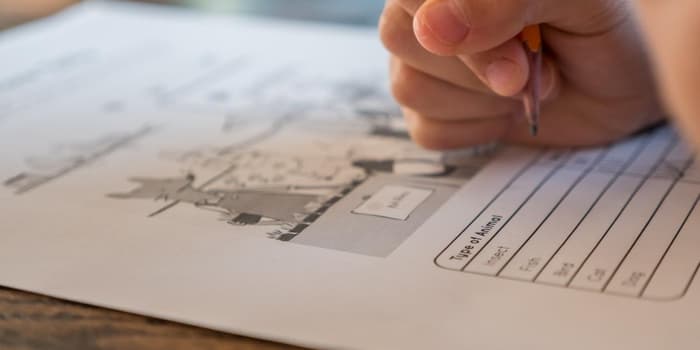How to Create AI Educational Podcasts for Studying
Create custom AI educational podcasts with Quizgecko. Transform your study notes into engaging, conversational audio with our AI podcast generator.

There are many different ways in which educators and teachers can assess a student’s progress, including through both formal and informal assessments.
However, whether you are working with students of varying abilities and learning styles or looking to assess the effectiveness of your own teaching, it's crucial that you are aware of the different types of assessments for learning you can use during this time.
In this article, we’ll provide you with the insight you need to understand what are the main types of learning evaluation and which methods are best when it comes to supporting your classes or individual students.
The three primary methods of assessment, which will be analyzed in this report, include formative, summative, and diagnostic assessments.
As mentioned above, there are many different types of assessments that can be used in the classroom or educational settings. However, the most popular include:
Ideally, educators should use a combination of the above methods to assess student progress and performance while also identifying potential gaps in their knowledge and understanding. This will give everyone the best chance of success.
Below are some examples of how you can introduce the different types of learning assessments into your curriculum.
As an educator, you must be able to identify the best assessment method for all types of learning.
For example, if you are working with students who may deal with access needs, diagnostic testing is a great way to ensure you have the proper support in place before classes begin. Alternatively, formative assessments can be used to ensure you’re able to identify which students may benefit from additional tutoring or support so that they’re able to achieve their end-of-year goals.
Just as there are many types of assessment for learning, there are many different types of learning styles. Being able to identify each student’s learning style means that you’ll be able to choose the right assessment methods for them.
For example, while summative assessments tend to be those that are featured on report cards and progress reports, it's important to note that exam-based anxiety can lead to students’ underperforming in these assessments. In these cases, referring back to their formative assessments and work can provide you with a clearer picture of their competency and understanding.
If you’re currently wondering what types of assessment can be used to evaluate learning, especially when curating your summative assessments, you may want to use a mixture of the following testing methods:
The above are great examples of types of classroom assessments that enhance learning and create a fair playing field for students of all skills and abilities. For example, as mentioned previously, relying on summative exams alone to gather an impression of a student’s skill set is not always the best indicator of their understanding of a topic. It may just be that this kind of formal assessment does not align with their learning style, or they may struggle to work in a time-sensitive environment.
As a quick refresher, here are the 3 types of learning assessments that you should aim to use in your classroom over the coming year - in order to support each and every one of your students.
Diagnostic Assessments. While diagnostic assessments typically take place at the end of the year, you may want to use them more frequently in your practices. For example, you could conduct diagnostic assessments each time you start on a new topic.
Formative Assessments. Formative assessments are particularly beneficial in classroom environments as the children may not even notice that their knowledge is being tested, which means they provide you with tangible evidence that they are acquiring the necessary skills and insight into their topics. For example, educational games can be used to assess a child’s competency while still remaining as fun as possible. As such, there’s no limit to how many formative tests you can schedule throughout the year, especially as they can help you to make meaningful changes to your teaching style or lesson plans to support your students.
Summative assessments. Summative assessments take place at the end of a particular topic or subject. However, this does not mean that you cannot make changes off the back of them. For example, if a student underperforms in these tests, you can signpost them toward the relevant support services so that they do not continue to fall behind their peers. Alternatively, this could indicate that you need to focus on certain topics more intensely moving forward instead of just glossing over them. As such, the results of these tests can be a great way to see how you can improve as a teacher and educator.
Create custom AI educational podcasts with Quizgecko. Transform your study notes into engaging, conversational audio with our AI podcast generator.
Master the art of studying alone with 7 proven tips. Create an ideal environment, manage time & stay motivated for productive solo sessions.
Discover the Leitner system: a powerful flashcard technique using spaced repetition to boost memory. Learn how to optimize study and improve retention.
Explore the Quizgecko platform and create your first online quiz, test or assessment. No credit card required.